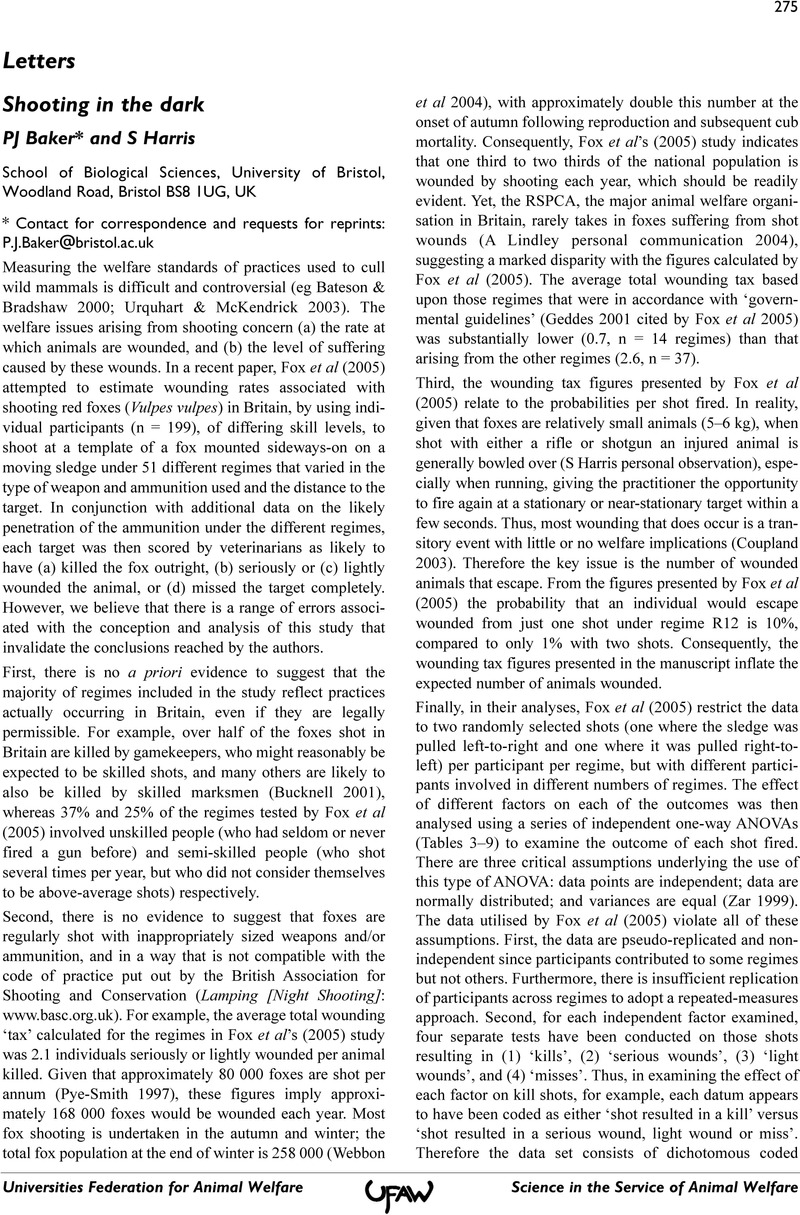Crossref Citations
This article has been cited by the following publications. This list is generated based on data provided by Crossref.
Baker, PJ
and
Harris, S
2006.
Still shooting in the dark.
Animal Welfare,
Vol. 15,
Issue. 1,
p.
89.
Cockram, MS
Shaw, DJ
Milne, E
Bryce, R
McClean, C
and
Daniels, MJ
2011.
Comparison of effects of different methods of culling red deer(Cervus elaphus)by shooting on behaviour and post mortem measurements of blood chemistry, muscle glycogen and carcase characteristics.
Animal Welfare,
Vol. 20,
Issue. 2,
p.
211.
Jones, Elizabeth Rhys
Cheape, Louisa
Clewley, Hazel
Walker, David
and
Renney, David
2023.
Wildlife management with dogs.
Veterinary Record,
Vol. 192,
Issue. 9,
p.
377.



